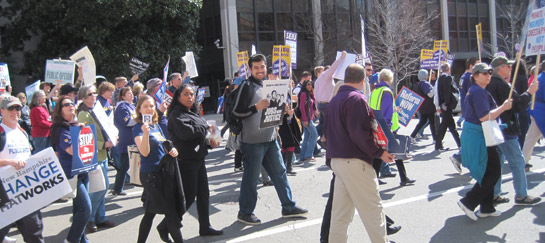Policy and Impact

In order for all Americans to have the opportunity to be healthy and thrive, they need health and wellness systems in place that anticipate and support their needs. The BRITE Center’s research studies make recommendations for improving policies that affect the health of racial and ethnic minorities; lesbian, gay and bisexual communities; and other underserved populations. The Center creates education and training programs to empower vulnerable populations to be better consumers of health information and programs. The Center also explores issues such as the connection between discrimination and health to bridge the gap between two critical branches of public policy. The examples below demonstrate how scientific data and research are helping to inform ongoing policy development and implementation.
In this Section
 Policy Impact Spotlight: Unequal Access Could Continue to Cost California’s Same-Sex Couples Their Health and Money
Policy Impact Spotlight: Unequal Access Could Continue to Cost California’s Same-Sex Couples Their Health and Money
A recent BRITE Center study examining the effects of unequal access to health insurance for same-sex couples in California found that the exclusion of gay men and women from civil marriage, and the failure of domestic partnership benefits to provide insurance parity, contribute to why partnered lesbians and gay men are more than twice as likely to be uninsured. Learn more
 Research Spotlight: School-Based Health Centers are an Untapped Resource for Addressing Disparities in Mental Health
Research Spotlight: School-Based Health Centers are an Untapped Resource for Addressing Disparities in Mental Health
Lack of access to mental health services and persistent disparities in mental health care health among minority youth are two pressing issues facing families, schools and communities. But what if there were a way to address both issues with one solution? Learn more
 Using Science to Understand Race and Discrimination
Using Science to Understand Race and Discrimination
By working across the fields of psychology, sociology and neuroscience, Center researchers are combining 1) research on the behavioral, social and psychological factors that explain the connection between discrimination and health, with 2) what happens on the molecular level in order to paint a comprehensive picture of why some communities live sicker and die younger than others. Learn more



